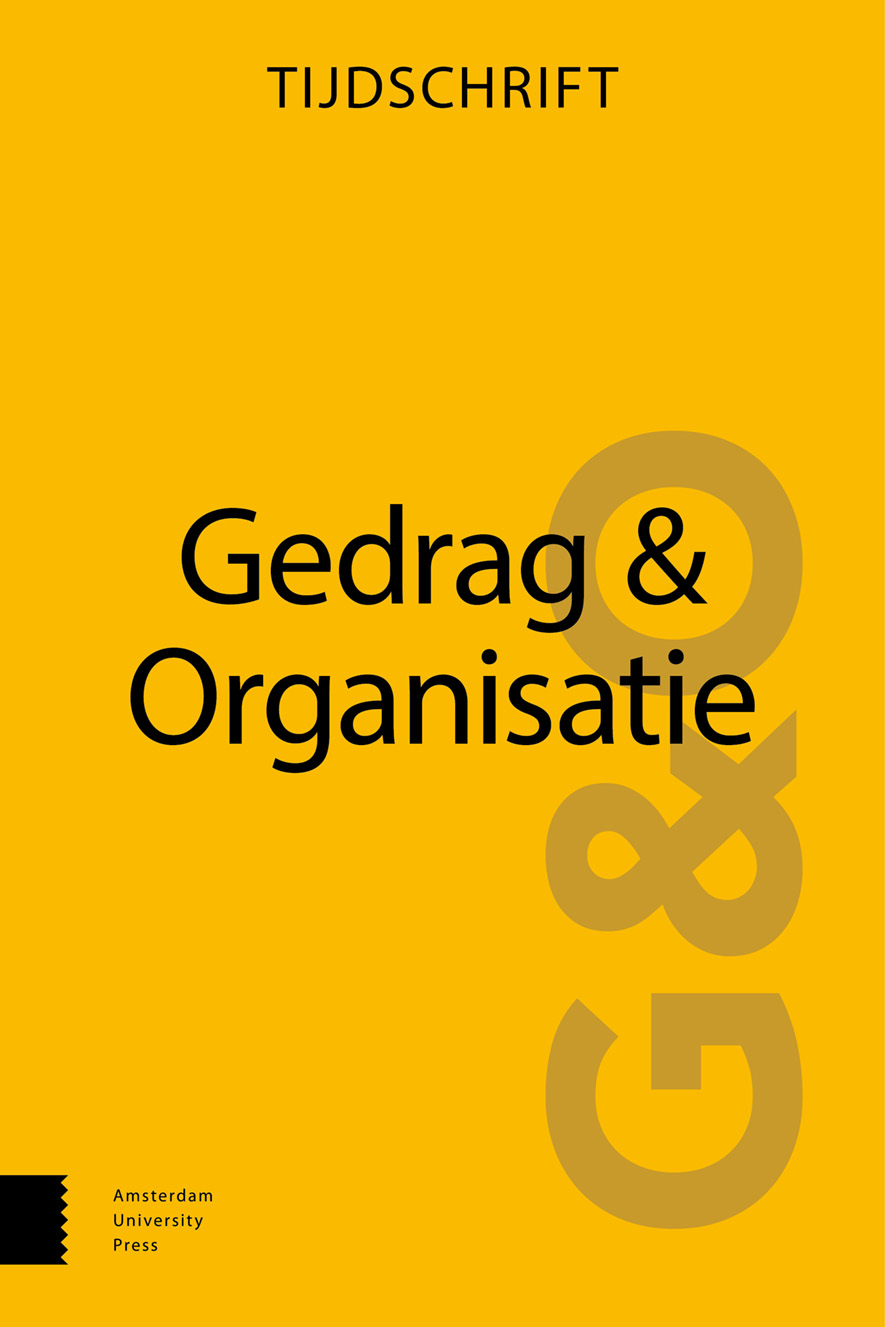-
f De leider in ‘context’: Themanummer ‘De nieuwe kleren van de leider (m/v/x): Leiderschap in tijden van digitalisering, globalisering en flexibilisering’ (deel 2)
- Amsterdam University Press
- Source: Gedrag & Organisatie, Volume 37, Issue 2, Jun 2024, p. 121 - 134
-
- 01 Jun 2024
- Previous Article
- Table of Contents
- Next Article
Abstract
Dit artikel leidt het tweede en laatste deel van het themanummer in: ‘De nieuwe kleren van de leider (m/v/x): Leiderschap in tijden van digitalisering, globalisering en flexibilisering’. Dit deel van het themanummer bundelt drie artikelen waarin ‘context’ centraal staat. Het eerste artikel onderzoekt de rol van de door werknemers ervaren fit met teamleden op de werknemerleiderrelatie, waarbij inclusief leiderschapsgedrag en de ervaren behoeften van medewerkers centraal staan. Het tweede artikel is een beschouwend artikel en bespreekt de wisselwerking van technologische ontwikkelingen en de percepties, acties en beslissingen van leiders. Het derde artikel doet verslag van een ‘toekomst-georiënteerd lab’, waar verschillende belanghebbenden rondom flexwerkers samen ideeën genereren en oplossingen bedenken rond de vraag hoe leiderschap vorm te geven zodat flexwerkers meer duurzame loopbanen kunnen verwezenlijken. De vierde, afsluitende bijdrage ten slotte is een kritische reflectie op leiderschapstheorie en -onderzoek in het algemeen, vanuit drie fundamentele pijnpunten in leiderschapsonderzoek: conceptualisatie, causaliteit en context. Deze reflectie zet de bijdragen van de ‘nieuwe kleren van de leider’ zowel in hun hemd als in het zonnetje, en geeft richtingen voor toekomstig onderzoek.



